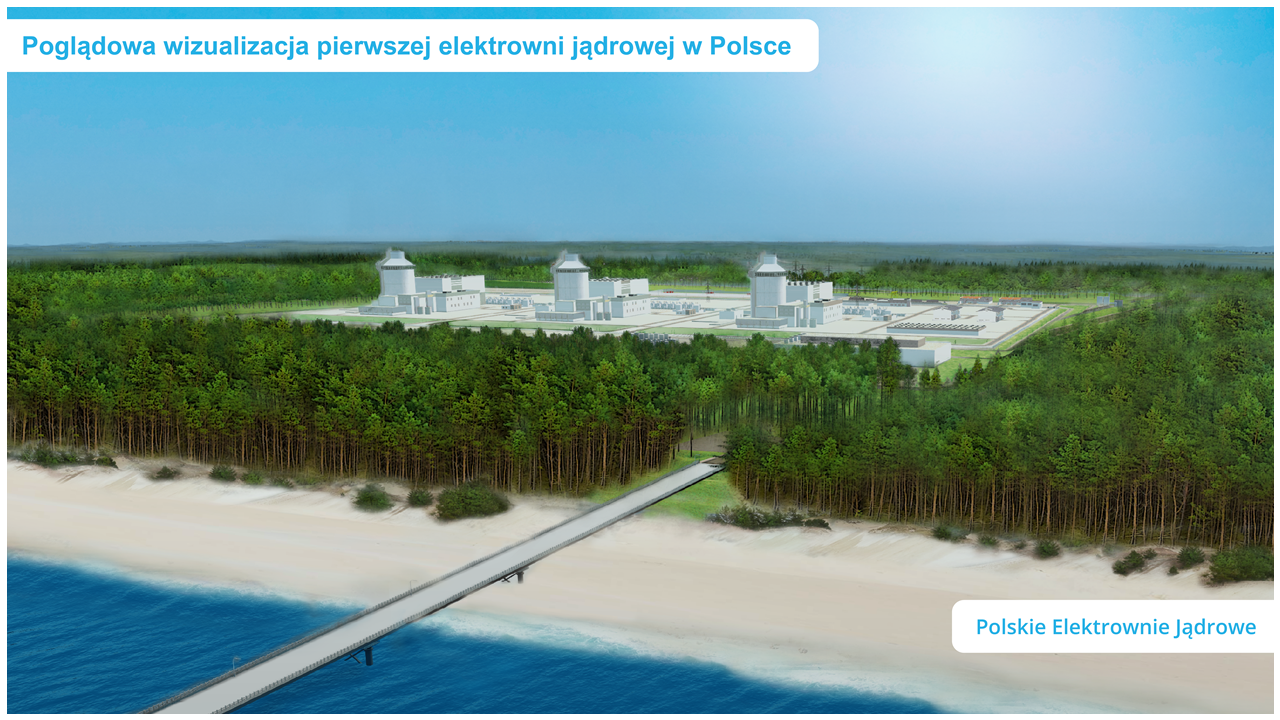The Polish nuclear power plant in Pomerania is expected to be built in 2033. The fuel will come, at least initially, from the Americans involved in the project – writes Wojciech Jakóbik, editor-in-chief at BiznesAlert.pl.
The largest producers of uranium are Kazakhstan, Canada and Australia, which provide a third of the supply of this element. Russia is responsible for about 5.4% of the world’s output. Interestingly, the largest supplier of uranium to the European Supply Agency EURATOM (ESA) managing the import was Africa’s Niger.
While uranium is traded on a regular market that in Europe is supervised by EURATOM, it can also be recovered thanks to recycling or… seawater, which happens increasingly more frequently. Developing the technology is one of the ways to maintain or increase the supply of this element. Another is developing mining capabilities by various methods: deep-mining as in a hard coal mine, open-pit as with lignite or a borehole, which involves leaching an underground deposit.
The next step in obtaining nuclear fuel is its enrichment. In the tubular method, UF6 is passed at high speed through small semicircular tubes. The centrifugal force pushes the gas component containing 238U to the edge of the track, which makes it possible to separate it from the gas component containing the lighter 235U. Of course, in this way it is not possible to completely separate the two isotopes. However, if one combines many of the systems described here in the so-called cascade, the result will be gas that contains a sufficient concentration of 235U atoms. In the diffusion method, the UF6 gas is passed through semi-permeable partitions. The lighter 235U diffuses through the pores of the partitions faster than the heavier 238U. This also leads to a partial separation of components. In the centrifugal method, the gas is spun in a very fast centrifuge. The centrifugal force presses the heavier component more strongly against the wall, so that the concentration of the lighter 235 in the middle part of the centrifuge increases. Here, too 235U and 238U are separated, although it is necessary to combine many circuits in a series to obtain the desired enrichment. According to EURATOM, Europe may become completely independent of Russia when it comes to uranium enrichment around 2029, which is long before Poland will start its first reactor in 2033.
After conversion and enrichment, uranium hexafluoride UF6 is converted to uranium oxide (UO2). Powdered UO2 is used to make capsules in 1.400 C degree heat with an average length of 1.5 cm and a diameter of 1 cm. These are then put into zirconium pipes. A pipe that is filled and completely sealed is called a fuel rod. Dozens or even hundreds of such rods form the so-called fuel kit that is placed in a reactor and allows the production of energy through the fission reaction of uranium-235.
Poles, at least initially, will get nuclear fuel for the AP1000 reactors planned in Pomerania from Westinghouse plants in the USA. In a nuclear power plant with an AP1000 reactor, only fuel assemblies specially designed for this type of reactor may be used. Each type and kind of reactor has an individual dedicated design of nuclear fuel. Westinghouse has plants in the United Kingdom, Sweden and the United States, but only the latter currently produces fuel for AP1000 reactors. This type of reactor cannot use any nuclear fuel used in other PWR (pressure reactors) and produced in European or Russian nuclear fuel plants.
Countries in the world with an extensive fleet of nuclear reactors such as France, Japan, South Korea, the United States, Russia primarily use domestically produced nuclear fuel. Due to the use of specific PHWR (pressurized heavy-water reactor) reactors, Canada also produces nuclear fuel at home. A new reactor in Finland (Olkiluoto 3) uses French fuel. Slovakia, the Czech Republic, Hungary, Ukraine and some reactors in Finland use Russian fuel due to the design of their reactors dating back to the times of the Soviet Union. In the near future, however, there is a real chance that these countries will switch to Westinghouse fuel, which will be produced at its nuclear fuel plant in Sweden. Ukraine is also advancing in this direction.
Interestingly, Ukraine’s Energoatom and Westinghouse plan to start production of WWER-1000 nuclear fuel to start exporting in three years. Together, they will also supply a fuel factory in Sweden, which is to supply Poland. Ukraine’s Energy Minister German Galushchenko announced that the cooperation involves the production of fuel rods for nuclear power plants in the post-Soviet technology. It is expected to end licensing in 2024. The rods are to go, among other places, to the plant in Vasteras, Sweden, from which nuclear fuel can come to the Polish nuclear power plant planned by Polish Nuclear Power Plants and Westinghouse in Pomerania. During the E23: PL for UA conference in Warsaw, representatives of Poland and Ukraine discussed nuclear cooperation between Polish Nuclear Power Plants and Energoatom. Westinghouse is building a joint services center in Kraków, Poland. Ukrainian experts were invited to co-create it. Nuclear cooperation between Poland, Ukraine and the United States should be further developed.









